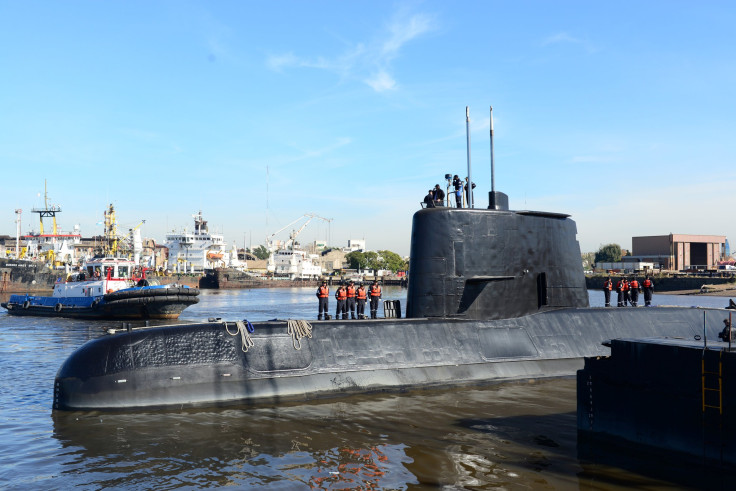Missing Argentine Submarine Latest: US Navy Calls Off ARA San Juan Search

The U.S. Navy announced it will pull out of the search efforts for a missing Argentine submarine that disappeared six weeks ago in the South Atlantic. The Navy will instead help from North America with data and planning analysis.
On Wednesday, the Argentine Navy announced that with help from Russia, it will continue its search for the ship, which went missing off the southern coast of Argentina Nov. 15 with 44 crew members on board. The U.S. joined the search for the German-built San Juan on Nov. 17 but will end its search for the ship in January.
The ARA San Juan's last known location was about 300 miles from Argentina's southern coast and was believed to have disappeared following the battery failure. Despite weeks of search, the ship was not found and the people on board were declared dead.
Earlier this week, the father of a crew member on board the missing submarine said he believed there were lies and deception involved in the disaster. Luis Tagliapietra, the father of Alejandro Damian, told the U.K.’s The Times that things were hidden in the wake of the submarine’s disappearance.
“Why does the navy hide things [from us]?” Tagliapietra told The Times. “Something very serious must have happened for so many lies to be told and for the total lack of effort to find it.”
Tagliapietra’s claims are not the first accusations leveled against Argentine officials by the family members of those on board.
Jesica Medina, the sister of one of the 44 missing sailors on board the vessel, said a Royal Navy helicopter was chasing the Argentine submarine when it went missing. However, U.K.'s Ministry of Defense refuted the claims.
Argentine Navy spokesman Enrique Balbi told reporters late November that the captain said water had entered through the diesel-electric vessel's snorkel when its batteries were being changed. An explosion was later detected around the time and place where the submarine last made contact.
“The extreme environment, the time elapsed and the lack of any evidence eliminates a scenario compatible with human life,” Balbi said. “These are hours of intense pain and anguish [for relatives] in light of the loss of their loved ones, our 44 comrades.”
Just days ago, Argentine authorities raided naval headquarters as part of its investigation into the submarine’s disappearance, according to Deutsche Welle.
The German-built TR-1700 class submarine was commissioned in the 1980s and had been refitted between 2008 and 2014. It was built by a subsidiary of now-defunct Germany's ThyssenKrupp.
Last week, a new sonar contact was detected in the search for the missing Argentine submarine. Authorities said that the contact will be investigated by the remotely operated Russian Panther Plus submarine as Atlantis — a U.S. oceanographic research vessel — continues to examine the search area.
© Copyright IBTimes 2025. All rights reserved.




















